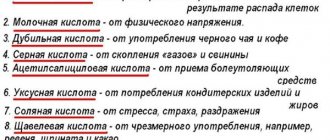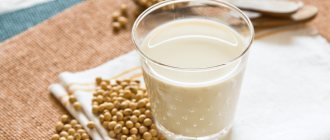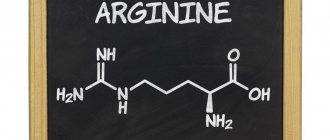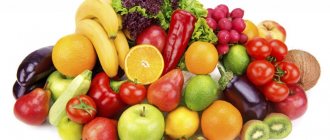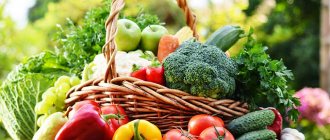Nutrition is an important part of human life, and when it comes to its therapeutic option, even more so. But not everyone knows what types of treatment tables there are, how they differ from each other, when they are used and what their features are. Let's figure out together how to distinguish them, what they are intended for, and at the same time decipher the designations.
General rules
There is no doubt that good nutrition is the main component of a healthy lifestyle and human health in general.
Dietary nutritional therapy meets the physiological needs of the body and is adjusted depending on the course of the disease and the stage of the disease. Until 2003, the numbered diet system was based on a nosological principle (by disease), including 15 diets and numerous (up to 60) modifications. However, Table No. 1 , 5 , 7 , 9 and 15 . In 2003, a new nomenclature of diets was introduced, which for convenience combined the standard diets used in healthcare facilities and developed by M.I. Pevzner back in the 30s of the 20th century.
The new standard diet system includes:
- The main version of the standard diet (this is the decoding of the OVD) replaced the main therapeutic Tables according to Pevzner No. 1 , 2 , 3 , 5 , 6 , 7 , 9 , 10 , 13 , 14 , 15 , which do not require special restrictions on products. It is recommended for all healthy people to maintain health and for people suffering from gastrointestinal diseases in remission, acute febrile diseases and diseases of the cardiovascular system without circulatory disorders or with a minimal degree of disorders. In this regard, it is divided into: OVD1 (for diseases of the stomach with high acidity), OVD2 (diseases of the stomach with low acidity), OVD5 (diseases of the liver and biliary tract), OVD10 (cardiovascular system), etc. This diet is distinguished by its physiological content of proteins, fats, and carbohydrates. It is enriched with vitamins , minerals and plant fiber. The diet is 4-6 times a day, including snacks and fermented milk drinks at night. If you have diabetes, an adjustment is made: quickly absorbed carbohydrates are limited or eliminated, preference is given to foods with a low glycemic index. Patients should eat up to 5 times a day. This diet provides for the consumption of 85-90 g of protein (of which 40-45 g are animal), 70-80 g of fat (25-30 g of vegetable), 300-330 g of carbohydrates (simple - 30-40 g, which are excluded in case of sugar diabetes). The energy value of the therapeutic version of the diet is 2016-2400 kcal. When losing weight, reduce to 1500 kcal. The diet is limited to extractive substances (broths), salt (up to 8 g/day), spicy seasonings, smoked foods, as well as spinach and sorrel containing oxalic acid are excluded. Dishes are steamed, boiled or baked. The amount of liquid you drink is 1.5–2 liters per day.
- Option with mechanical and chemical sparing (includes Tables 1B , 4B , 4B , 5p ). Prescribed for gastrointestinal diseases. It is distinguished by the limitation of chemical (spicy, fried, extractive dishes) and mechanical irritants, so dishes are prepared exclusively by steaming or boiling; sometimes mashing or pureeing food is recommended.
- An option with a reduced protein content - a low protein diet (LPD) includes Tables 7A , 7B .
- With a high protein content - a high-protein diet (HPD), which includes Tables 4e , 4ag , 5p (second option), 7c , 37g , 9b , 10b .
- With reduced calorie content - a low-calorie diet (LCD) includes Tables 8 , 8A , 8o , 9A , 10C . Indicated for varying degrees of obesity without gastrointestinal complications. The diet provides for a moderate calorie restriction (1340-1550 kcal) due to fats (maximum 60 g in total) and the complete exclusion of easily digestible carbohydrates. It is enhanced by the content of plant fiber. Diet 5 times a day.
- With increased calorie content ( Table 11 ) for patients with tuberculosis - 3110-3640 kcal.
General characteristics of the OVD diet:
- It is balanced, so the feeling of hunger when doing it is eliminated.
- Designed for continuous adherence by healthy people and patients in remission.
- Contains healthy foods and a lot of fiber.
- Provides for fractional meals - 4 times or more when organizing snacks, which contributes to the rhythmic activity of the gastrointestinal tract.
- Involves preparing food by boiling, baking or steaming. These heat treatment methods do not involve the use of fats during cooking, so the food has a lower calorie content than fried food. In addition, it is easily absorbed and digested without disturbing the function of the digestive system.
- Excludes fatty and fried foods, extractive substances.
- Limits the consumption of simple carbohydrates and foods high in cholesterol.
The OVD diet, to summarize, is a healthy diet containing the physiological norm of all nutrients, aimed at maintaining a normal weight. If you want to lose weight, you will have to significantly increase physical activity and reduce caloric intake to 1500 kcal in your diet, or immediately choose an option with a reduced energy value, intended for obese patients .
Low Protein Diet Option
In contrast to the previous version of the diet, here the proportion of protein products is significantly reduced. This is required for impaired renal function, in particular, problems with nitrogen excretion and the presence of azotemia. Consequently, the proportion of carbohydrates increases here, but not at the expense of their easily digestible part.
- The main difference from previous systems is the limitation of the amount of sodium-containing products. In particular, table salt up to 0.5 g/day.
- Also, the proportion of protein is reduced to 20 g, where 15 g are of animal origin. The amount of carbohydrates increases to 350 g, fats are still the same 80 g. The calorie content of the diet per day is 2200 kcal.
Meat and fish of absolutely any kind are unacceptable on the menu; legumes, alcohol, coffee and cocoa, and chocolate are excluded. Restrictions on cereals and flour products.
Authorized Products
- Fish, steamed, boiled or baked.
- Lean meats and poultry prepared in the same way.
- Rye and wheat bread, flour products. These foods are limited when losing weight.
- Soups made from weak (secondary) broths or vegetable broths. To keep the diet varied, alternately include borscht, cabbage soup with fresh cabbage, rassolnik, various vegetable soups, beetroot soup (indicated for those prone to constipation ), and mushroom cereals. It is better to limit the consumption of the latter due to their higher calorie content.
- Any low-fat fermented milk drinks - yogurt, acidophilus, kefir, ayran, yogurt.
- Milk and sour cream for adding to dishes, cottage cheese 100-150 g per day, cheese 30 g.
- Boiled eggs or in the form of steamed, baked omelettes.
- Various cereals and pasta. They should be limited if you want to lose weight.
- Butter no more than 20 g, vegetable oils for seasoning dishes in the amount of 1-2 tbsp. l.
- Any vegetables according to tolerance. It's best to limit radishes, radishes, sorrel and spinach.
- Fresh fruits and berries in dishes (purees, mousses, jellies), compotes, juices, jelly and fruit drinks.
- Cocoa with water and milk, tea, coffee, rosehip infusion. According to the basic diet, sugar is allowed in the amount of 35 g per day. When losing weight, it is limited or eliminated.
Table of permitted products
| Proteins, g | Fats, g | Carbohydrates, g | Calories, kcal | |
Vegetables and greens | ||||
| zucchini | 0,6 | 0,3 | 4,6 | 24 |
| cabbage | 1,8 | 0,1 | 4,7 | 27 |
| cauliflower | 2,5 | 0,3 | 5,4 | 30 |
| carrot | 1,3 | 0,1 | 6,9 | 32 |
| cucumbers | 0,8 | 0,1 | 2,8 | 15 |
| beet | 1,5 | 0,1 | 8,8 | 40 |
| pumpkin | 1,3 | 0,3 | 7,7 | 28 |
Fruits | ||||
| apricots | 0,9 | 0,1 | 10,8 | 41 |
| oranges | 0,9 | 0,2 | 8,1 | 36 |
| watermelon | 0,6 | 0,1 | 5,8 | 25 |
| bananas | 1,5 | 0,2 | 21,8 | 95 |
| pears | 0,4 | 0,3 | 10,9 | 42 |
| melon | 0,6 | 0,3 | 7,4 | 33 |
| lime | 0,9 | 0,1 | 3,0 | 16 |
| lemons | 0,9 | 0,1 | 3,0 | 16 |
| tangerines | 0,8 | 0,2 | 7,5 | 33 |
| plums | 0,8 | 0,3 | 9,6 | 42 |
| apples | 0,4 | 0,4 | 9,8 | 47 |
Berries | ||||
| grape | 0,6 | 0,2 | 16,8 | 65 |
| strawberry | 0,8 | 0,4 | 7,5 | 41 |
| sea buckthorn | 1,2 | 5,4 | 5,7 | 82 |
| currant | 1,0 | 0,4 | 7,5 | 43 |
| rose hip | 1,6 | 0,0 | 14,0 | 51 |
Mushrooms | ||||
| mushrooms | 3,5 | 2,0 | 2,5 | 30 |
Nuts and dried fruits | ||||
| raisin | 2,9 | 0,6 | 66,0 | 264 |
| dates | 2,5 | 0,5 | 69,2 | 274 |
Cereals and porridges | ||||
| buckwheat (kernel) | 12,6 | 3,3 | 62,1 | 313 |
| cereals | 11,9 | 7,2 | 69,3 | 366 |
| corn grits | 8,3 | 1,2 | 75,0 | 337 |
| pearl barley | 9,3 | 1,1 | 73,7 | 320 |
| millet cereal | 11,5 | 3,3 | 69,3 | 348 |
| rice | 6,7 | 0,7 | 78,9 | 344 |
| barley grits | 10,4 | 1,3 | 66,3 | 324 |
Bakery products | ||||
| wheat bread | 8,1 | 1,0 | 48,8 | 242 |
| rye-wheat bread | 8,1 | 3,4 | 42,2 | 222 |
| Rye bread | 6,6 | 1,2 | 34,2 | 165 |
Raw materials and seasonings | ||||
| honey | 0,8 | 0,0 | 81,5 | 329 |
Dairy | ||||
| milk | 3,2 | 3,6 | 4,8 | 64 |
| kefir | 3,4 | 2,0 | 4,7 | 51 |
| sour cream | 2,8 | 20,0 | 3,2 | 206 |
| curdled milk | 2,9 | 2,5 | 4,1 | 53 |
| acidophilus | 2,8 | 3,2 | 3,8 | 57 |
| yogurt | 4,3 | 2,0 | 6,2 | 60 |
Cheeses and cottage cheese | ||||
| cheese | 24,1 | 29,5 | 0,3 | 363 |
| cottage cheese | 17,2 | 5,0 | 1,8 | 121 |
Meat products | ||||
| beef | 18,9 | 19,4 | 0,0 | 187 |
| veal | 19,7 | 1,2 | 0,0 | 90 |
| rabbit | 21,0 | 8,0 | 0,0 | 156 |
Bird | ||||
| chicken | 16,0 | 14,0 | 0,0 | 190 |
| turkey | 19,2 | 0,7 | 0,0 | 84 |
Eggs | ||||
| chicken eggs | 12,7 | 10,9 | 0,7 | 157 |
Oils and fats | ||||
| butter | 0,5 | 82,5 | 0,8 | 748 |
| corn oil | 0,0 | 99,9 | 0,0 | 899 |
| olive oil | 0,0 | 99,8 | 0,0 | 898 |
| sunflower oil | 0,0 | 99,9 | 0,0 | 899 |
Non-alcoholic drinks | ||||
| mineral water | 0,0 | 0,0 | 0,0 | – |
| lingonberry juice | 0,1 | 0,0 | 10,7 | 41 |
| green tea | 0,0 | 0,0 | 0,0 | – |
| black tea | 20,0 | 5,1 | 6,9 | 152 |
Juices and compotes | ||||
| compote | 0,5 | 0,0 | 19,5 | 81 |
| apricot juice | 0,9 | 0,1 | 9,0 | 38 |
| jelly | 0,2 | 0,0 | 16,7 | 68 |
| carrot juice | 1,1 | 0,1 | 6,4 | 28 |
| tomato juice | 1,1 | 0,2 | 3,8 | 21 |
| pumpkin juice | 0,0 | 0,0 | 9,0 | 38 |
| rose hip juice | 0,1 | 0,0 | 17,6 | 70 |
| * data is per 100 g of product | ||||
NBD - therapeutic low protein diet
This table is intended primarily for those who suffer from acute kidney diseases, in particular renal failure. Its essence is to limit the consumption of protein foods, which, when processed by the kidneys, causes an increase in the level of acetone in the blood. NBD is indicated for patients with impaired functioning of the gallbladder and ducts, liver, pancreas, and with excessive accumulation of amino acids in the body.
Protein standards are usually prescribed by the attending physician, but they range from 0.6-0.7 grams per 1 kilogram of weight. Thus, it is permissible to consume approximately 40-55 grams per day on NBD. Small amounts of protein consumed should be completely natural, preferably of animal origin: meat, fish, milk, dairy products, cottage cheese, hard cheese. Completely excluded: fatty meat, smoked meats, offal, chocolate, soda and any alcohol, candy, nuts, seeds, beans, dried fruits, vermicelli, pasta and bread, semi-finished products, spices and herbs, coffee.
Fully or partially limited products
- Refractory fats, margarine, mayonnaise.
- Fatty meat broths.
- Fatty meat, poultry.
- Any fried food.
- Sausage, smoked meats, any canned food.
- Baking, sweets, jams, jams, sugar, ice cream, cakes and pastries are excluded when losing weight.
Table of prohibited products
| Proteins, g | Fats, g | Carbohydrates, g | Calories, kcal | |
Vegetables and greens | ||||
| canned vegetables | 1,5 | 0,2 | 5,5 | 30 |
| swede | 1,2 | 0,1 | 7,7 | 37 |
| canned cucumbers | 2,8 | 0,0 | 1,3 | 16 |
| radish | 1,2 | 0,1 | 3,4 | 19 |
| white radish | 1,4 | 0,0 | 4,1 | 21 |
| turnip | 1,5 | 0,1 | 6,2 | 30 |
| canned tomatoes | 1,1 | 0,1 | 3,5 | 20 |
| horseradish | 3,2 | 0,4 | 10,5 | 56 |
Confectionery | ||||
| cake | 3,8 | 22,6 | 47,0 | 397 |
Chocolate | ||||
| chocolate | 5,4 | 35,3 | 56,5 | 544 |
Raw materials and seasonings | ||||
| mustard | 5,7 | 6,4 | 22,0 | 162 |
| ketchup | 1,8 | 1,0 | 22,2 | 93 |
| mayonnaise | 2,4 | 67,0 | 3,9 | 627 |
| ground black pepper | 10,4 | 3,3 | 38,7 | 251 |
| sugar | 0,0 | 0,0 | 99,7 | 398 |
| vinegar | 0,0 | 0,0 | 5,0 | 20 |
Meat products | ||||
| pork | 16,0 | 21,6 | 0,0 | 259 |
Bird | ||||
| smoked chicken | 27,5 | 8,2 | 0,0 | 184 |
| duck | 16,5 | 61,2 | 0,0 | 346 |
| smoked duck | 19,0 | 28,4 | 0,0 | 337 |
| goose | 16,1 | 33,3 | 0,0 | 364 |
Fish and seafood | ||||
| smoked fish | 26,8 | 9,9 | 0,0 | 196 |
Oils and fats | ||||
| creamy margarine | 0,5 | 82,0 | 0,0 | 745 |
| animal fat | 0,0 | 99,7 | 0,0 | 897 |
| cooking fat | 0,0 | 99,7 | 0,0 | 897 |
| * data is per 100 g of product | ||||
OVD diet: decoding, menu of treatment tables according to Pevzner
material:
The therapeutic nutrition system developed by the scientific nutritionist M.I. Pevzner in Soviet times does not lose its importance today. Each OVD diet or table has a number and corresponds to a specific group of diseases.
Explanation of the concept of diet OVD
The main version of the diet (OVD) consists of 15 tables. These treatment systems have specific numbers. They are used as an adjunct to drug therapy to speed up the recovery of people with various diseases.
The therapeutic diet is based on the scientific principles of healthy eating. The patient receives nutritious food, balanced in the main components - proteins, fats and carbohydrates. Gentle modes are provided - mechanical, chemical and thermal, which allow you not to burden the digestive organs and endocrine glands.
Proper therapeutic nutrition implies adherence to the drinking regime, sufficient intake of vitamins and minerals into the body. What is important is the frequency of meals, serving temperature, compliance with sanitary and hygienic requirements for food preparation technology, and rules for storing prepared dishes.
Principles and features
Thanks to the selection and proper combination of products, the gentle method of heat treatment of food ingredients, medicinal systems are beneficial to health. A feature of dietary nutrition is the ban on certain food components. You need discipline and organization in order not to disrupt your meal schedule and control the caloric content of your daily diet.
To prepare dishes, we use only high-quality premium products, fermented milk and dairy ingredients, fresh fruits and vegetables. Avoid chocolate, coffee, baked goods, fatty, smoked, salted, pickled and spicy foods. To add flavor and attractiveness to dishes, add fresh herbs and cumin.
Common methods of cooking dietary dishes include boiling in water or steaming, stewing, and baking. The main rule of cooking is to cook the food well. The diet should be varied, the average daily energy value of the diet is 2150–2450 kcal.
Indications for use
Dietary nutrition is an important component of complex treatment. Some diseases of the digestive organs and endocrine glands can be cured without the use of medications.
In such cases, the Pevzner diet plays the role of one of the main therapeutic factors.
But often special nutrition only creates a favorable background for the most effective implementation of health procedures.
Menu (power mode)
There are several options for OVD with strictly taken into account calorie content and prescribed BZHU content. After studying all the examples, you can choose the seven-day menu that is most suitable for you and suits your taste. You can create your own diet for the week without using foods from the prohibited list.
The seven-day menu below for the main options for standard diets has a calorie content of 1500 to 1700 kcal on different days of the week, excluding the consumption of bread, butter and sugar. If you add 150 g of rye bread, 150 g of wheat, 20 g of butter and 35 g of sugar (7 teaspoons in all dishes), the energy value will increase by 830 kcal, which is significant for a person who is trying to lose weight. This menu takes into account all the necessary nutrients, the food is very varied and is organized 6 times a day.
If eating this menu is not accompanied by weight loss, you can reduce the consumption of carbohydrates (porridge, potatoes) and replace them with vegetable dishes. This way you will reduce the energy value of your diet.
| Breakfast |
|
| Lunch |
|
| Dinner |
|
| Afternoon snack |
|
| Dinner |
|
| For the night |
|
| Breakfast |
|
| Lunch |
|
| Dinner |
|
| Afternoon snack |
|
| Dinner |
|
| For the night |
|
| Breakfast |
|
| Lunch |
|
| Dinner |
|
| Afternoon snack |
|
| Dinner |
|
| For the night |
|
| Breakfast |
|
| Lunch |
|
| Dinner |
|
| Afternoon snack |
|
| Dinner |
|
| For the night |
|
| Breakfast |
|
| Lunch |
|
| Dinner |
|
| Afternoon snack |
|
| Dinner |
|
| For the night |
|
| Breakfast |
|
| Lunch |
|
| Dinner |
|
| Afternoon snack |
|
| Dinner |
|
| For the night |
|
| Breakfast |
|
| Lunch |
|
| Dinner |
|
| Afternoon snack |
|
| Dinner |
|
| For the night |
|
OVD diet: principles of diet, menu for the week
The abbreviation “OVD” in the context of dietary nutrition stands for “main diet option.” It includes 15 treatment tables, which were developed back in 1930 by the Soviet physician M. Pevzner.
Although quite a lot of time has passed since then, the diet has not lost its relevance. It is used not only as a therapeutic technique, but also as a system for getting rid of excess weight.
However, if a person wants to lose weight on the OVD diet, he will need to additionally exercise.
The main principle of the OVD diet is to cover all the nutritional needs of the human body.
Food should be varied, it is important that it contains a sufficient amount of fiber.
The products are subjected to heat treatment - they are boiled and baked, but no oil is used. This allows you to preserve the maximum amount of vitamins and minerals in the finished dish.
If a person suffers from diabetes, then during the diet he should completely eliminate sugar from his menu. Products that contain extractive substances are subject to severe restrictions. During the diet, you should not eat smoked meats, seasonings and spices (hot), spinach and sorrel.
The average daily calorie intake is 2170-2400 kcal.
In this case, fats, proteins and carbohydrates are distributed as follows:
Proteins – 85-90 g. Animal proteins account for 40-45 g of the total.
Fats – 70-80 g. Vegetable fats account for 25-30 g.
Carbohydrates – 300-330 g. Simple carbohydrates account for 30-40 g.
Although the recommended daily calorie intake is 2400 kcal, to start the process of losing excess weight, you will need to cut it down to 1500 kcal.
Indications for use of the OVD diet
The OVD diet is used in the following cases:
Chronic stomach and intestinal ulcers.
Chronic intestinal pathologies, accompanied by irritable bowel syndrome and constipation.
Acute inflammation of the gallbladder.
Acute hepatitis during the recovery stage.
Chronic hepatitis (provided that the liver retains its functionality).
Diabetes mellitus type 2 without obesity.
Pathologies of the cardiovascular system, but without a pronounced disturbance in their functioning.
Atherosclerotic lesions of the coronary arteries of the heart, brain and peripheral vessels.
Source: https://www.ayzdorov.ru/dieta_pohydenie_OVD.php
OVD diet: explanation and menu
If a person trying to lose weight rejects strict methods for fear of negative consequences, it makes sense for him to look for a system that is close to healthy eating, but more strict.
The treatment menu has this quality, an example of which is the OVD diet, which is actively used in medicine, whose decoding sounds like “the main version of the diet.”
Who is this diet recommended for, what is it and will it help you lose weight?
What is the OVD diet
Decoding this abbreviation does not bring much clarity to the essence of this system. It is not enough to know what OVD means, and information about whether this diet belongs to the list of treatment tables does not help understanding either.
It would be more correct to say that OVD is a nutritional system that is indicated for persons with diseases that do not require serious menu restrictions, but are focused on the general maintenance of health and the prevention of remissions of a number of diseases.
This includes both digestive problems and:
- allergies;
- diseases affecting the cardiovascular system, including hypertension;
- fever;
- infectious diseases.
In a general sense, OVD is the main option for a medical diet, i.e. treatment table without a specific focus.
This is almost the same healthy diet that doctors talk so much about, only, firstly, there is no talk of calculating calorie content and nutritional supplements (individually) - there is a general norm that must be adhered to. Secondly, the OVD diet is not aimed at losing weight, because
does not imply a calorie deficit, but it makes sense for overweight people to use it - adjusting the menu will help them start losing kilos due to the absence of “harmful foods”.
- Why do women and men dream about snakes?
- Fatty liver: how to treat
- Rosehip – beneficial properties and contraindications. What is the benefit of rosehip decoction and what diseases does it help with?
Principles
Most of the ATS rules are identical to the requirements for all medicinal menus: this especially applies to heat treatment, which excludes frying. All products must be prepared by boiling or baking; you can also steam dishes. No less important are the other aspects of the ATS diet:
- The daily calorie content of the menu should not decrease beyond 1700 kcal.
- The amount of protein per day is about 85 g, half comes from animals; amount of fat – 70 g, 1/3 of which is of vegetable origin; the amount of carbohydrates according to the ATS standards is 300 g.
- The main version of the diet involves a classic fractional menu with 6 meals a day.
- If the diet is prescribed to a person with diabetes, any refined carbohydrates become prohibited.
- The recommended temperature of all products and dishes, according to ATS standards, is 15-60 degrees.
Main indications
Doctors say that anyone who wants to strengthen the immune system, improve the health of the digestive tract, and normalize all metabolic processes in their body can adhere to the rules of internal affairs. Official medicine gives the following indications for this therapeutic diet:
- peptic ulcer in a chronic condition;
- exacerbation of gastritis;
- irritable bowel syndrome;
- frequent constipation;
- type 2 diabetes, but not accompanied by obesity, because This diet does not allow you to actively lose weight;
- chronic hepatitis;
- cholecystitis and gout;
- gallstones;
- ischemia;
- hypertension;
- atherosclerosis.
OVD diet menu
The diet for this treatment method is compiled almost entirely according to the principles of a healthy diet, but with some restrictions. Prohibited foods include any canned food, smoked meats, or pickled foods, because
they are irritants for the intestines and stomach, increasing the acidity of the latter. Prohibits OVD and hot seasonings, some types of greens - sorrel, spinach. You also need to forget about alcohol, fatty meat, sausages, and carbonated water.
You cannot prepare salty dishes on a diet: the daily salt limit is up to 8 g. Allowed foods are determined by the Department of Internal Affairs table.
ATS desk
There are 4 main versions of this diet, called “tables”.
For each of them, the Department of Internal Affairs provides a separate list of permitted and prohibited products, and individual requirements for the preparation of dishes.
Due to the fact that the ATS is regulated by official medicine, each diet option helps the body, even when the diet is reduced, to receive all the vitamins and minerals that are needed for full functioning.
ATS 1
If you suffer from stomach diseases, the 1st option of the OVD is recommended for you, where the essence of the diet is to be careful with the mucous membrane of the digestive tract. Food should not cause the production of gastric juice and bile. Particular attention should be paid to foods that irritate the stomach and forget about them. This:
- sausages;
- conservation;
- legumes;
- pearl barley and millet cereals;
- cabbage, radish;
- mushrooms;
- everything is salty;
- coffee;
- fermented milk drinks;
- sharp cheeses;
- fried eggs;
- fatty fish.
- Pityriasis versicolor in humans, causes, photos. Treatment of pityriasis versicolor with drugs and folk remedies
- Lamb ribs in the oven: recipes with photos
- How to lose weight without dieting and get rid of belly fat
According to the standard rules of this diet, you will prepare yourself vegetable soups with the addition of cereals, you can eat yesterday’s bread, and lean cookies. Even pies are allowed, but they must be cooked in the oven. The following are not prohibited in this type of ATS:
- dietary poultry;
- cereals;
- vegetables;
- boiled eggs.
ATS 9
This diet option is suitable for people who want to lose weight, since doctors recommend OVD 9 in the presence of diabetes and obesity, i.e. The focus of this table is weight loss. In addition to the previously mentioned prohibited products, which are relevant for all police departments, it is unacceptable to consume:
- baked goods;
- caviar;
- salted cheese;
- white rice, because it has a high GI.
Pasta and semolina are also prohibited. You should also forget about rich broths, even fish ones, at the police station, as well as about soups with milk.
Other foods, including potatoes, are allowed, but the diet will be effective if the proportion of starch sources is reduced.
There are no restrictions on fruits, but people with diabetes need to control calories. This also applies to dried fruits and nuts.
ATS 10
Doctors recommend that people suffering from vascular and heart problems avoid foods that increase cholesterol levels, i.e. supply this element to the body.
This means that the diet should involve avoiding all fatty foods, including eggs, legumes, marinades, and sources of salt. Additionally, you should not eat bran bread and other products containing coarse fiber. Chocolate, cocoa sources, and all confectionery products are also prohibited.
It is advisable to take yesterday’s bread or in the form of crackers. Only lean meat, meat by-products are prohibited.
Reviews and results
The main point of this diet is that it is balanced and contains the optimal calorie content for maintaining weight, and if it is reduced, for weight loss. Moreover, weight loss will occur slowly and without harm to health. This nutritional option is also suitable for overweight people with medical conditions. Strict adherence to all requirements will allow you to get rid of 500 g to 1 kg per week with increased physical activity. This rhythm of weight loss is the most optimal for losing weight.
- “... While staying in the sanatorium, I was on a similar diet. Only I didn’t eat pastries, sweets, I only took one piece of bread. At the same time, I ate porridge three times a day as a side dish for meat or fish. We were crushed by porridge - I don’t eat it three times a day at home, but there was no way out. There were also vegetable salads three times a day. I think that I ate normally and without any special restrictions. Imagine my surprise when, after 15 days, it turned out that the weight had decreased by 2 kg. I attribute this to the fact that the food was not fatty, and meat dishes were served boiled. All dishes were under-salted. I also went a lot (to the springs three times a day).”
- “... On such a diet I managed to lose 4 kg in a month. Yes, this is not much, but the important thing is that I did not feel hungry, I was cheerful and active. But to achieve such results, I ate porridge only once a day, sometimes twice, including milk. Potatoes were baked only 3 times in a month. For side dishes I used fresh or stewed vegetables, as well as various vegetable dishes. The diet was in the summer, so there was plenty of zucchini, eggplant, cucumbers, any greens, fruits (raspberries, currants, apricots). I made the juices myself. Of course, I excluded all unhealthy foods, and did not keep temptations in the form of sweets, cookies, and cakes in the house at this time. My conclusions: it’s easy to lose weight in the summer, eliminating fried foods helps, losing the first kilograms is easier - later I had to reconsider the diet and tighten it.”
ShchD - gentle diet for weight loss
This therapeutic nutrition system was developed by nutritionists. Its main principle is fractional nutrition, with carefully chopped food and compliance with its temperature regime. It can be used for weight loss purposes, but was originally intended to relieve symptoms of the following diseases:
- Diarrhea.
- Acute intestinal diseases.
- Diseases of the stomach and pancreas.
- Pathologies of the kidneys and liver.
The consumption of sugar, spices, herbs, fat and oil is completely excluded, and you can’t eat any fried foods either. Products with emulsifiers, dyes, and flavor enhancers are not acceptable for ShchD.

